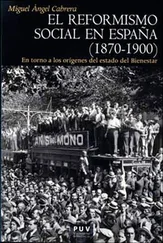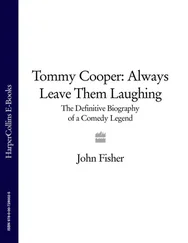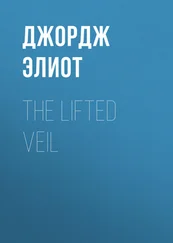1 ...6 7 8 10 11 12 ...25 I feel a need to finish this introduction by perverting the codes of scholarship and to instead partake of Barber’s celebration of candor and cleansing. I want to leap over the fence that separates the scholar from the researcher. Every scholar knows that, when writing, the distance that we make in our strife to grant reliability and significance to our work obscures the personal compromise that, as researchers, we make when we undertake such projects. But we are still there, behind concepts, statements and valuations, disguising the moral and emotional bet that we make with every word.
When I began researching Barber’s books I was unemployed, single, and I was still living at my parents’ house. Now I have a job at a college, I have fallen in love and I pay a mortgage. I am no longer the same person who read “Mormon Levis” for the first time, and I know that my research played a very important part in the making of who I am now. Phyllis played an important role. My work may be losing reliability and significance after this confession but I have a debt here. I am in debt. This is also a description of my own search. Maybe, somehow, I got to write a hidden fiction behind my scholarly narrative. Maybe somebody can see behind these words how I retell my own story. If so, then Phyllis Barber’s writing and this book will successfully attain the unconscious ambition that they were searching for: association and conversation. Bridges erected. Borders erased. Veils that part—whether under the power of the supernatural, or not.
1Barber’s engagement with The Church of Jesus Christ of Latter-day Saints is not measured here. My statement that she is a Mormon is grounded in her cultural and spiritual education, even though, throughout her literary production, different levels of attachment to the Church will be apparent. Perhaps, that variety in her commitment to the Church shows that such a defining label as Mormon is slippery. As a starting point, I trust my use of the term in an academic realm, since I reckon the necessity to establish a defining context to place her literary production. In a deeper analysis, I believe that throughout this book I show how I perceive that any notion related to a possible definition of Barber’s literary production as Mormon fiction claims a wide conception of the term, thus following and agreeing with the general spirit and philosophy of this book.
2I have opted to use Church in the upper case whenever I am making reference to the Mormon or the LDS Church. When written in the lower case, I am talking about the institution of the church in general terms.
3The metaphor of the veil is a constant term used by Mormons to describe the fine border between the earthly and the celestial worlds. In Barber the use of this term is symbolic. Here I too use the term to signify the sense of discovery.
4Brian Evenson states that “one can gave preestablished rules in one’s life, and one can live according to a certain moral code and still have quite a bit of openness in a text. With the Mormon emphasis on choice, making choices, I would think the Mormon writer would feel compelled to write an open text rather than a closed one” (Bigelow 35).
5Hesford and Kulbaga use here the words by Susan Stanford Friedman in “Location Feminism: Gender, Cultural Geographies and Geopolitical Literacy” to complete the definition of what they mean by glocation.
6In fact, this image came to mind again when I read about the Maori ideal of the turangawaewae as explained by Holly YoungBear-Tibbetts. She indicates that Maori people use this expression to describe the complex relation of belonging to a place, as it is translated as “a place for one’s feet to stand” (YoungBear-Tibbetts, Canoncito 159). I felt that my presence in this context was not only “territorial and political” but also that I was to be careful about my “positioning of intellect and philosophy” (YoungBear-Tibbetts, Canoncito 159). Thus, I not only needed to learn how to walk with those moccasins, I also needed to be careful about where I was stepping.
7She was referring to the short stories collected in The School of Love . Helen B. Cannon appreciates the same flair in her review of the collection.
8Richard Cracroft applies Nibley’s definition of the dichotomy between a Mantic and a Sophic view of the world to Mormon literature. The Mantic perception of life conceives that the divine operates in what we could call the real world. The Sophic perception, on the contrary, rejects the supernatural as an energy on duty in the real world (Cracroft, Attuning 1).
9The pagination of these quotations corresponds with the free version of this article that Carrie A. Miles provides in her personal website ( http://carriemiles.wordpress.com/). In any case, the citation in my bibliography gives the publishing reference. This article was published in Revisiting Thomas F. O’Dea’s The Mormons : Persistent Themes and Contemporary Perspectives (2008).
The Mormon Context (History and Literature):
Always with a stitch in my side
To analyze the whole literary production of a writer encompasses more than just focusing on his or her books. At least, in my overview of Phyllis Barber’s literary production, I found that if I wanted to deliver a thorough and extensive analysis of her books, it would be necessary to go beyond them. The goal might seem too aspirational and intricate, but it is my impression that this spirit has consistently proved to be unavoidable, and more so as I aspire to widen my conclusions in order to propose assumptions that may be of assistance when approaching a specific culture and its corresponding literature. In the case of this project, it is in regard to the members of The Church of Jesus Christ of Latter-day Saints. I even dare add a third pursuit even if this makes my target too high and far away. As I already explained in the general introduction to this book, I also pretend to offer my analysis and the subsequent conclusions as an invitation to reflect on our position as cultural subjects determined by, or, at least exposed to, a variety of social, cultural, political and moral components that complicate our personal definitions of self.
Just by taking a look at the structure of this book, one can perceive which main factors of Phyllis Barber’s literary production I have considered relevant for achieving a complete analysis of her work. Her being a woman, mother and wife, together with the fact that Barber’s fiction is set in an urban West are noticeably proposed as main factors considered in the general analysis of her literature. Another element that is obvious to any reader is that of her being, or having been, a member of The Church of Jesus Christ of Latter-Day Saints. However, it is not her membership that I consider to be important, but the fact that it has been a troublesome one. Some time before I finished this book, I had the chance to ask Barber herself about my calling her a Mormon. This was the answer that she gave me:
I'm a writer who is informed by my birth in the West, by the Mormon religion which has played a large role in shaping who I've become, and by my desire to craft my expression into something beautiful in the literary sense of that word. Many ‘Mormons’ might not consider me a Mormon writer, actually, because I don't always write pleasant things, and I haven't stayed within the boundaries of Mormon idealism in my own life. 1
My insistence in describing Barber as a Mormon needs to be understood as part of the researcher’s urge to resort to labels in aid of accessibility, coherence, and academic scrutiny. At any rate, based on this answer and on further inquiry, I deduce that Barber is aware of the influence that her being raised a Mormon has had upon her. That is indeed a palpable strand in her literature. In fact, it is impossible not to perceive her compulsion towards spiritual connection, and this compulsion, regardless of whether or not it takes her beyond any established denomination, originally springs from her Mormonism. Likewise, it cannot be denied that her being a woman as well as her sensitivity toward the landscape of the American West, are crucial elements in the shaping of her identity. She herself says as much. However, both of these elements can be related to her being a Mormon. Without a doubt, analyzing Barber’s fiction requires a multiplex strategy, one that digs out her roots but that also maps out the long road that leads her from them.
Читать дальше












